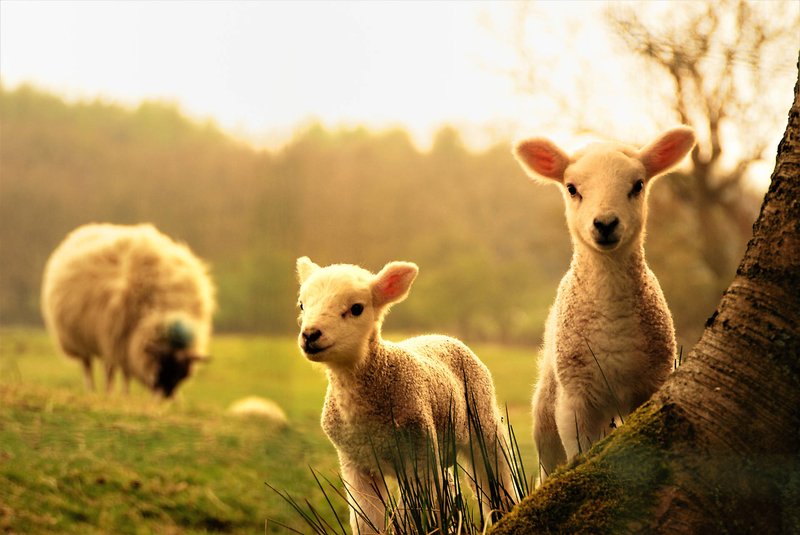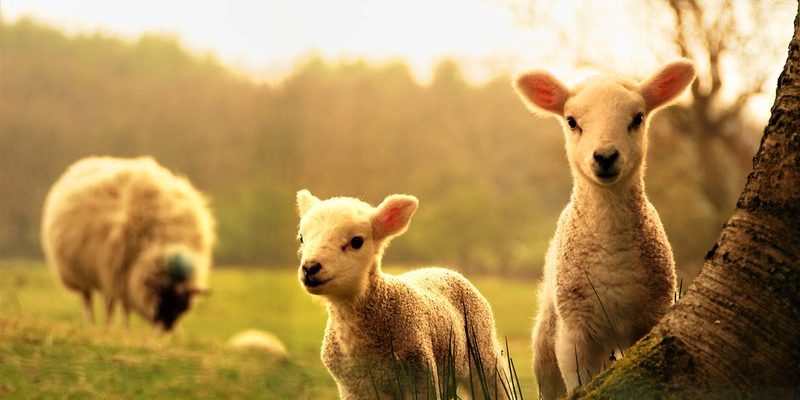
Imagine a mother sheep as a diligent guardian, always watching over her young one while teaching it all the essential skills it needs to survive. It’s a fascinating process that speaks to the strength of nature and the bonds between mothers and their offspring. So, let’s dive into the captivating world of sheep and explore how these gentle creatures raise their young in the wild.
The Gestation Period: A Time for Preparation
The journey of raising a lamb starts long before it sees the light of day. Ewes have a gestation period of about five months. During this time, the mother sheep prepares for the arrival of her young one. You might picture her as she grazes, slowly getting used to the idea that soon, she’ll be a mom.
During the latter part of her pregnancy, a ewe tends to become a bit more solitary. This is her instinct kicking in, as she looks for a cozy, safe spot to give birth. It’s like nesting before a big event—she knows that finding a quiet, sheltered area is crucial. This area, often away from the rest of the flock, allows her to focus on her newborn without distractions or threats.
Once the lamb is born, it’s a whirlwind of activity. The first few moments are crucial. The ewe gently licks her newborn, helping it to breathe and dry off. This isn’t just a sweet moment—it’s vital for the lamb’s health. It stimulates circulation and helps the little one bond with its mother. This bond forms the foundation of their relationship, ensuring the lamb feels safe and secure.
Identifying Their Young: Sheep Communication
Have you ever noticed how animals seem to communicate in ways we can’t quite grasp? Sheep have their own forms of communication, especially between mother and lamb. Ewes can recognize their lambs by their bleats and scents. This unique connection is essential for the lamb’s survival.
When a lamb is born, it often let out a series of bleats that sound different from the rest of the flock. It’s like a special password the mother recognizes. Throughout the first few days, the ewe will respond with her own unique calls, helping the lamb learn that she’s its caregiver. This communication sets the stage for a strong bond, as the lamb learns to identify its mother amid a crowd.
Interestingly, this bond doesn’t just benefit the lamb. The ewe becomes protective, ensuring her young one stays safe from predators. You might wonder how she does this—it all comes down to her vigilant nature and keen senses. She keeps a close eye on her surroundings, always ready to defend her precious lamb.
Feeding the Lamb: Nature’s Perfect Design
Feeding a newborn lamb is an essential part of its early life. After just a few hours of birth, the lamb starts searching for its mother’s milk. This milk is rich in nutrients, providing the energy and antibodies needed for a healthy start. The ewe’s milk contains just the right balance of nutrients, almost like nature’s perfect recipe for her growing young.
Ewes usually allow their lambs to nurse several times a day. The first few days are particularly critical, as the lamb must drink colostrum—a special type of milk filled with antibodies that jumpstart its immune system. This helps the lamb grow stronger and healthier, and it’s a key factor in its survival in the wild.
It’s amazing to think about how quickly lambs grow. Within just a few weeks, they’ll start grazing on grass alongside their mothers. You might picture a little lamb bouncing around, trying to imitate its mom, learning what to eat and what to avoid. It’s an adorable sight, and it’s all part of nature’s plan for them to thrive.
Protecting Their Young: The Ewe’s Vigilance
In the wild, safety is paramount. Ewes are incredibly protective of their lambs, especially during the first few weeks after birth. They instinctively position themselves between their young and potential threats, like predators. It’s fascinating to watch—a mother sheep will stand her ground, asserting her role as a guardian.
She also employs clever tactics to keep her lambs safe. For example, if she feels her young one is in danger, she may lead it away from the rest of the flock to a more secure spot. In these moments, her instincts shine through, reflecting the deep bond and understanding between mother and lamb.
Interestingly, ewes are also known to form protective coalitions with other mothers. They support one another, creating a communal sense of safety. This collaboration helps ensure that all the lambs are watched over, making it a collective effort in raising the young.
The Weaning Process: A Key Transition
As the lamb grows, the weaning process begins. Typically around four to six months old, lambs are gradually transitioned from their mother’s milk to solid food. This step mirrors a rite of passage. The ewe starts to distance herself, encouraging the lamb to become more independent.
This process is beneficial for both the ewe and her lamb. It allows the ewe to regain strength after months of caring for her young, while the lamb learns critical survival skills and how to thrive on its own. You might liken it to a young adult moving out of their parents’ house—exciting yet a little daunting!
During this transition, the lamb continues to hang around its mother, often learning by watching her. It’s a time filled with exploration and play, with the lamb bouncing around and practicing the grazing skills it’ll rely on later. The bond between the ewe and her lamb doesn’t break; it simply evolves into a different stage of their relationship.
Social Structures: Lambs and Their Peers
Once weaned, lambs begin to interact more with their peers. This socialization is crucial, as it helps them learn the dynamics of the flock. You might picture them playing and establishing a pecking order, much like kids on a playground. These experiences are key for developing social skills and the ability to work together as a group.
Sheep are herd animals, meaning they thrive in groups. Being part of a flock provides safety, as there’s strength in numbers. Lambs learn how to communicate and bond with others, which becomes vital when they must navigate the challenges of the wild. They rely on each other for protection and guidance.
Interestingly, sheep have unique personalities. Some lambs may be more adventurous, while others might prefer to stay close to their mothers. This individuality allows them to carve their own paths while still being part of a larger community.
Raising young sheep in the wild is an intricate and beautiful process. From the moment a lamb is born, it’s surrounded by care, communication, and the teachings of its mother. Through every stage—gestation, feeding, protecting, and socializing—ewe and lamb create a bond that’s essential for survival.
This natural cycle reflects the resilience of life itself. As lambs grow and thrive within their flock, they carry on the traditions learned from their mothers. It’s a journey filled with love, instinct, and a touch of wildness that reveals the wonders of nature. In the end, the story of how sheep raise their young reminds us of the beauty and complexity of life around us, all unfolding in the simplest yet profound ways.

